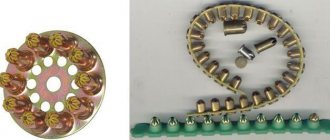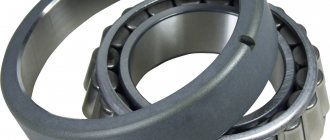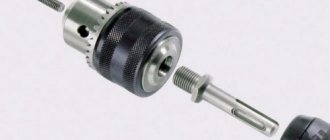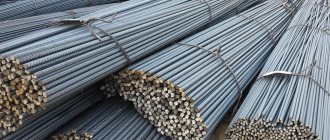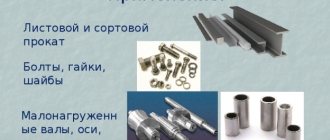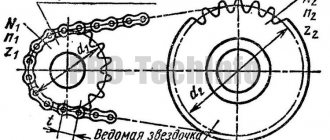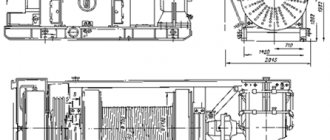Home | Weapons | Shooting training | The device of cartridges
The growing number of combat missions forces small arms developers to constantly improve weapon systems. Increasing shooting accuracy, creating increased power and lethality of ammunition are their main tasks. And this depends on a careful approach to each of the elements of a live cartridge: the design of the cartridge case, the bullet material and the composition of the explosive. We talked briefly about how small arms work earlier, but today we will talk about the design of the cartridge.
A cartridge is a device that is used to load a firearm.
Classification of cartridges
The ammunition used in modern small arms can be divided into several conventional classes, mainly by caliber. Considering cartridges for military weapons, several conditional classes can be derived:
- Ammunition for pistols has a caliber from 4.5 to 12 mm;
- Ammunition for revolvers has a caliber from 5 to 12 mm;
- Ammunition for assault rifles has a caliber from 5.45 to 7.62 mm;
- Ammunition for sniper rifles has a caliber from 7.62 to 9 mm;
- The special “anti-material” ammunition has a caliber from 12.7 to 20 mm.
The cartridge consists of the following parts - a projectile (bullet), a propellant charge (gunpowder), a metal sleeve and a gunpowder igniter (primer). A schematic drawing of the bullet and cartridge case is attached below.
Marking
It means the presence of an inscription that gives a brief description of the cartridges. To see all the required information, you need to look, for example, at 12 gauge cartridges or their packaging. But the wrapper may get lost. And you will have to be content with the information posted on the sleeve. Usually it indicates the purpose of the cartridge, the type of gunpowder used in its creation, length, shot number, caliber. If we talk about those intended for sale in Russia, then there may be additional drawings. Design is regulated by GOST 15.009.
What does the cartridge consist of?
What is a cartridge case - this is a part of ammunition, which is the main structural element connecting the other components of the cartridge. It is responsible for protecting the powder mixture, for fastening the bullet, for creating the necessary pressure of the powder gases that push the bullet down the barrel. It looks like a thin-walled metal tube, usually steel or brass, covered on one side with a flat metal sheet, with a primer located in the center, and a bullet mounted on the other.
During installation, the bullet is compressed by the neck of the cartridge case to prevent the bullet from falling out, as well as to maintain the pressure of the powder gases when fired. The cartridge case, depending on the purpose of the cartridge and the caliber of the bullet, can have either a flat (pistol or revolver cartridge) or a bottle (usually an automatic or rifle cartridge) shape. The bottom of the cartridge case (where the primer is placed) has a rim or welt made for easy removal of the spent cartridge case after firing.
The capsule plays the role of an igniter of the powder mixture - the firing pin of the weapon hits the capsule, which is an iron cap filled with an igniting composition (mercury fulminate, potassium chlorate and stibnite), after which the composition, compressed by the impact of the anvil of the cartridge case, ignites and ignites the gunpowder. Modern cartridges are rechargeable, with the ability to change the primer.
The propellant charge is a nitrocellulose type powder mixture. The composition of the mixture varies depending on the manufacturer, the cartridge or its purpose, as well as the production series.
The bullet is the central part of the cartridge, the main purpose of which is to defeat the enemy.
The structure of the bullet and its components:
- The bullet jacket is typically constructed from a low-carbon steel alloy, coated with a brass alloy tombac to prevent corrosion;
- The lead shell of the core, necessary to penetrate the enemy’s body through personal armor protection;
- A pointed core made of hardened steel or other hard metals, used to destroy enemy organs;
Labeling difficulties
Unfortunately, it is impossible to say that there is a universal classification of hunting cartridges that is used always and everywhere. For example, in the Russian Federation there is a 45 caliber. In the US it becomes 0.45. Whereas the UK generally designates it as 0.450.
Shotgun cartridges are designated by a specific caliber, which is equal to the number of bullets cast from one English pound of lead that can be loaded into the weapon. Thus, it is inversely proportional to the numerical value. That is, the largest is 4, then 8, 10, 12, 16, 20 and so on.
For rifled weapons, the caliber is determined by the distance between two different riflings. As a rule, it is equal to the diameter of the bullet.
Purpose of the device and principle of operation of cartridges
There are also special purpose cartridges according to their purpose: Tracer ammunition is used to correct the fire of one shooter or as part of a unit. The bullet has one or more containers that leave a visible trace showing the direction of the bullet's flight.
It can be used at any time of the day, but is best seen at night.
Incendiary ammunition is designed to set fire to structures that are easily ignited - wood, fuel containers. The design of the bullet of such a cartridge contains a certain amount of incendiary mixture (white phosphorus, thermite mixture), which, when burned, set fire to everything around.
Currently used only in combined ammunition
Armor-piercing cartridges , depending on the caliber, are used against targets protected by armor plates - body armor, light armored vehicles.
Expansive bullets are mainly used for hunting due to their increased lethality.
Nowadays, the use of cartridges with hollow-point bullets in combat is prohibited by the Hague Convention.
Why is it necessary to understand calibers and numbers?
Many novice hunters, unfortunately, do not always understand why this is needed. But everything is explained very simply. The fact is that if you use large-caliber ammunition when hunting birds or small animals, this will result in a greatly spoiled appearance of the prey.
This is especially true in cases where hares and other fur-bearing animals are hunted. That is, in cases where it is necessary to keep the skins in good condition. The correct shot for duck will preserve feathers in good quality, which can then be used.
One should take into account the fact, which is not obvious to many, that the dimension acts as an indicator of the energy of the cartridge, and not the size of the projectile used. What does this lead to in practice? Let's say that a large-caliber bullet hits the body of a large animal. In this case, it will begin to rotate strongly. This will cause severe damage. This situation prevents a through flight, in which a wounded animal can escape from the hunter.
Understanding what caliber and number is needed is also important for reasons of economy. After all, more powerful cartridges with a large caliber are more expensive compared to small ammunition.
In addition, the issue of weight is also relevant here. Both the projectile individually and the weapon as a whole. It is worth considering that a small caliber has better flatness and allows you to hit the target more accurately. Even in adverse weather conditions.
Which sleeve to choose
The largest and most visible component of a hunting cartridge is the cartridge case. This is what a person sees when looking at the cartridge - all other components are inside.
Today, two types of sleeves are produced - plastic and brass. Several decades ago, cardboard sleeves were also produced, but plastic analogues quickly replaced them almost immediately after their appearance due to their greater moisture resistance.
Therefore, the choice of modern shooters is limited to two options. Which one should you give preference to? It depends primarily on what weapon you are using. For example, if it is a semi-automatic weapon (Saiga, MP-153, MTs-21-12 or another), then after the shot it simply throws out the cartridge case. Finding it in thick grass, bushes or water is quite difficult. Bright plastic ones (most often red or blue) are found much faster. But it will take a lot of time to find dark yellow brass, and it is almost impossible to find it in water. Therefore, for lovers of semi-automatic machines, plastic ones are suitable - it’s not such a shame to lose them.
But for shooters who prefer classic or double-barreled shotguns, brass cartridges will serve well - they remain in the barrel after a shot, without having to look for them.
Yes, metal sleeves are more expensive than plastic ones. But they can withstand several hundred shots, while plastic rarely survives 5-10 shots. Decide this question yourself.
About the fight
In a shotgun, combat must be analyzed based on the density of the shot falling over a specific distance and area. This is the accuracy of the battle.
The usual shooting distance for a shotgun is 35 m. The diameter of the target used is 75 cm. The impact of the shot is expressed in two ways: its total number or percentage.
The number of pellets of a single charge is 100%. The number of pellets that hit the target becomes the basis for calculating the percentage of the total fractional charge.
Example. The conditions are:
- cartridge caliber – 16;
- number of pellets - 150;
- their number is 5;
- distance – 35 m.
If hit, you get 105 pellets. Then the accuracy is 70%.
Manufacturers of hunting ammunition
When choosing suitable cartridges, it is recommended to take into account the manufacturer in order to be confident in the quality of the purchased product. Products from the following manufacturers are widely used among hunters: Poleva, Brenneke, Sheddit, Glavpatron, SKM, Fetter, Tahoe, Record and others. Next, we will dwell in more detail on the features of the composition, diameter, speed and other indicators of hunting ammunition manufactured by these companies.
Poleva
Polev's bullets became very widespread in the countries of the former USSR. They received their name from the name of their designer V.V. Poleva. Polev's cartridges are of the switch type; they include a lead striking element with a plastic shank. The head of the ammunition is equipped with a plastic container that is separated after the bullet leaves the barrel. This design feature contributes to better passage of the Polev bullet through the gun channel.
Polev's bullets performed especially well when hunting large game, including bear, elk, and wild boar.
Polev bullets have a number of undeniable advantages:
- confident shooting at a distance of up to 100 and even 150 meters;
- excellent speed;
- high level of muzzle energy (2500-3000 J).
Thanks to these advantages, many hunters consider Polev’s bullets to be the best among domestic products and give preference to them. However, Polev's bullets also have their drawbacks:
- low weight (28-29 g for 12/70 cartridges, while bullets from other manufacturers weigh on average 32 g), which reduces its lethality;
- low level of stabilization, due to which the bullet deviates greatly from its trajectory even due to small obstacles;
- the complex shape does not allow high-quality production of such a bullet at home.
Brenneke
Brenneke cartridges are manufactured in Germany and are of very high quality. The manufacturing company became known more than 100 years ago thanks to the German inventor Wilhelm Brenneke, who created a bullet that is still actively used for smooth-bore weapons. The head part of the Brenneke bullet contained lead, and the tail part contained a felt wad. The mass of a 12/70 caliber bullet ranges from 30 to 32 g. Currently, Brenneke bullets are produced with various energy levels and in various calibers. However, the production scheme, based on the use of a arrow-turbine Brenneke bullet, remains virtually unchanged.
The latest releases of Brenneke bullets, equipped with plastic stabilizers, are recognized as the most advanced; they are distinguished by excellent speed and stability in flight.
The main advantages of Brenneke bullets:
- high accuracy of fire;
- excellent stabilization during flight (deflection is very small, even if it touches grass or branches during flight).
The disadvantages of Brenneke hunting cartridges include:
- the complexity of manufacturing due to the rather intricate shape and composition of the bullet, as well as the need for additional components (bolt, stabilizer of a certain shape). In this regard, any minor flaw during production greatly affects the quality of the ammunition.
Sheddit
Sheddit cartridges are very popular among hunters. The only drawback of such bullets is their considerable cost. Unlike products from other manufacturers, Sheddit cartridges include elements that are all manufactured in one factory. This has a significant impact on the quality of this ammunition. Currently, 12, 16, 20, 24, 28, 32, and 36 caliber cartridges are produced, as well as 410 caliber cartridges. For example, 12/76 caliber bullet ammunition weighs 43 g, and 12/70 - 28 g, which is less than the standard 32 g for many other companies. In addition to standard modifications, Sheddit produces Magnum cartridges with an increased energy rating.
Tacho
Another inexpensive ammo option is the Tahoe. Tahoe ammunition was appreciated not only by hunters, but even by the 2000 Olympic champion in skeet shooting N. Milchev. One of the main advantages of Tahoe products is combat stability, as well as pinpoint accuracy in loading cartridges.
Today in stores you can find Tahoe ammunition loaded with shot numbers from No. 4 to No. 9. In addition, the Tahoe company also produces ammunition, which includes bullets and buckshot. Tahoes are suitable for shotguns with chamber sizes of 65, 70 and 76 mm. For example, the weight of a 12/70 caliber lead bullet is 32 g, and the 12/76 Magnum bullet is 46 g.
Glavpatron
The Tula Glavpatron plant is widely known in our country as a manufacturer of high-quality, reliable ammunition. Many hunters are attracted to Glavpatron brand products, not least due to their low cost. However, despite the affordable prices, Glavpatron also pleases with its quality: high stability and excellent rate of fire.
Sports and hunting ammunition is produced under the Glavpatron brand. Moreover, Glavpatron hunting ammunition is divided into several categories:
- standard,
- classic,
- semi-magnum and magnum,
- special;
- bullets.
As for the Glavpatron caliber, you can easily find 12, 16 and 20 in stores. The weight of standard 12/70 shells is 32 g, the weight of Magnum 12/76 bullets is 48 g. Glavpatron ammunition from the special category includes 12 gauge cartridges with special characteristics. Including a lightweight version, the “Bio” model with a special wad, which makes it possible to obtain a wide spread of shot when shooting at medium distances (about 30 meters). The Dispersant Glavpatron has a wad with similar characteristics, but it is effective for shooting at short distances. But the “High Speed” model was specially designed to increase the range of hitting the target.
Techkream
The Russian company Techkrim produces ammunition for smooth-bore and traumatic weapons. In particular, we are talking about shot cartridges with different speeds and diameters. The weight of standard shot ammunition 12/70 is 32 g, for the Magnum model of caliber 12/76 - 43 g. The main advantage that Techkrim cartridges can boast of is the ideal price-quality ratio, thanks to which the products of this manufacturer are actively used by many hunters.
SCM
The domestic company SKM Industry produces high-quality hunting ammunition, both standard and Magnum. In addition, SCM is the only domestic manufacturer that produces shot cartridges with ultra-long-range characteristics.
In recent years, shotguns with 70 mm chamber lengths have become widespread in the world due to the restriction of the use of harmful lead. This contributed to the development of the popularity of Magnum ammunition from SCM and other companies. However, SKM ammunition is truly of unsurpassed quality, which is ensured by strict production controls. So at SCM Industry, when each batch of cartridges leaves production, ballistic tests are carried out.
The composition of SKM ammunition shells includes primed cartridges 12/70 Fiocchi and Cheddite or 12/76 Cheddite, gunpowder of various brands - from PSB to Sokol, fiber or polyethylene wads of various types, shot and buckshot of domestic production, Gualandi bullets for 32 and 40 g SKM bullets can have different weights, including 28, 32, 36, 40 g, etc., it all depends on the specific characteristics of the charge.
Among the main advantages of SKM ammunition:
- safety of operation,
- maximum projectile speed while maintaining an optimal level of accuracy,
- reliability of cartridges for semi-automatic shotguns,
- comfortable shot with low recoil.
Fetter
Fetter hunting bullets are in great demand on the Russian hunting goods market. In particular, we are talking about the largest caliber Fetter cartridges, 12 and 10 gauge. Their weight can be: 28, 32, 36, 42, etc. gram. Another feature of the Fetter company is 12-gauge sports cartridges. In addition, Fetter supplies and sells products from foreign manufacturers such as Remington, Umarex, Fiocchi, and others.
Many hunters prefer the Vetter Sport brand, because these cartridges are distinguished by the excellent quality of gunpowder and high flight speed. The plastic sleeve ensures high stabilization of bullets, and thanks to the aluminum pan, Fetter ammunition can be successfully used in any weather without fear that the powder may become damp.
Fetter Magnum cartridges are also very popular; they are lightweight and compact due to plastic sleeves. Thus, the weight of Vetter Magnum cartridges is only 34 g, and the diameter of the base is 16 mm. However, the company’s assortment also includes lighter ammunition, for example, 32 g or even 25 g, it all depends on the diameter, caliber and other characteristics.
This brand of ammunition has high muzzle energy and is ideal for hunting in winter, and especially for targeted shooting at short distances (up to 25 meters).
Record
Domestic Record cartridges are used by a fairly large number of hunters, despite certain disadvantages. This is due to the fact that Record ammunition is one of the cheapest on the market, but for many the decisive factor is not only the composition, materials and workmanship, but also how much the ammunition costs. Today, the manufacturer offers Record cartridges with different characteristics of energy and speed, as well as for various purposes: hunting, sports, special. Record ammunition may contain shot, bullets or buckshot made from different materials (lead, steel, rubber).
For hunting smoothbore weapons, Rekord is produced in various calibers: 12, 16, 20, 410, as well as all the necessary components: wads, cartridges, pli, shot, etc. the weight of a standard 12/70 cartridge is from 32 to 36 g, and the Magnum 12/76 is from 38 to 48 g. Record caliber cartridges are excellent for hunting small, medium and large game.
Among the disadvantages of the Record brand, it is worth noting that the combat sharpness is not very sharp, however, experienced hunters claim that at a distance of up to 30-35 meters these ammunition performed well. In addition to its low price and availability in all stores, Record ammunition has also gained popularity due to its low recoil when fired.
Clever
When choosing cheap ammunition, you should also pay attention to Clever cartridges. The advantages that characterize Clever cartridges are their low cost. The weight of standard 12/70 ammunition ranges from 32 to 36 g, and the Magnum 12/76 modifications weigh up to 50 g.
There are quite a large number of manufacturers, both domestic and imported, but those presented on this list are in greatest demand among hunters, which indicates the high quality of the products and many other advantages.
Do you need a container?
When talking about the composition of the regenerative cartridge, it is worth talking about the container. This is a special plastic container that is inserted into the cartridge case immediately after the gunpowder and filled with shot or buckshot.
Its use allows you to increase the combat range, as well as accuracy - the spread of the shot will decrease and all of it will hit a relatively small target. But if a hunter needs a large spread (for example, when shooting with small shot at a flock of woodcocks at a short distance), then it is better to abandon the container. In this case, the shot range will decrease, but you can shoot down several small birds with one cartridge.
Therefore, a hunter, when going hunting, must choose the optimal composition of the cartridge himself in order to increase his chances of success.
About the choice
It is advisable to use exactly those cartridges recommended by the manufacturer for a particular weapon. This is due to the fact that guns from different companies, but of the same caliber, often have discrepancies in diameter. And this difference in some cases can reach 1 mm! Therefore, to get a good fight and achieve the final result, it is necessary to use suitable bullets, buckshot and shotgun cartridges.
If you plan to fire over a long distance, it is advisable to pay attention to Magnum-type cartridges. They are distinguished by high power and significant bullet ejection energy. Due to this, they have increased lethality. This makes the cartridges suitable ammunition not only for hunting at long distances, but also allows you to kill large animals. When choosing manufacturing plants, we can advise you to pay attention to domestic companies. They supply quality products at a very reasonable price. In addition, given that domestic guns, such as the legends IZH-18, IZH-27 and IZH-43, are very popular in our country, you can select cartridges that are suitable for them.
